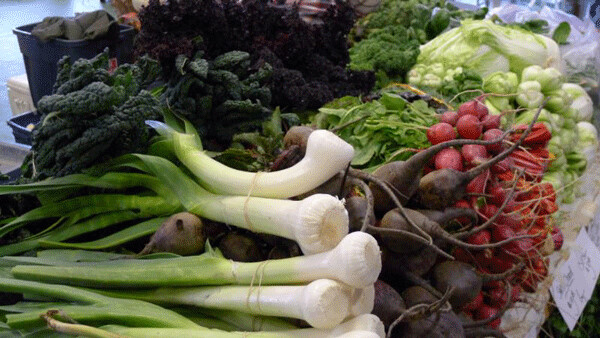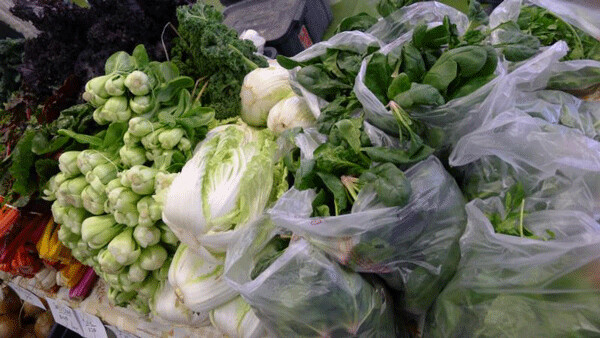Perpetual Potion

A restaurant in Bangkok has served the same soup for more than 4 decades. Not the same recipe, the same soup.
Every night at Wattana Panich, the leftover broth of the kway teow beef noodle soup is removed from the Jacuzzi-sized wok in the center of the kitchen and filtered. The chunks and particles are discarded, the broth is refrigerated, and the next morning the leftover broth is used as the mother of that day’s kway teow.
This type of dish, and the method behind it, is sometimes called perpetual stew. The idea is that every day the stew/soup/broth/stock, depending on the exact ingredients, gets eaten, added to, and heated. Perpetual stew makes use of the fact that extended heating can extract nutrients from food, while keeping it sterile and safe to eat.
In some ways, perpetual stew resembles the sourdough starters that some bakers will adopt into their families and use for years, sometimes naming their starters and even assigning them a gender. But while a starter must be painstakingly maintained, a perpetual stew is re-killed every day in the bubbling cauldron. Nonetheless, that dead elixir has the ability to breathe life into any savory dish you could imagine. Use it to cook rice, deglaze a pan, add subtle complexity to a pasta sauce.
And of course, when you have perpetual stew you always have soup at a moment’s notice. Add some non-scrap carrots, cut into bite sized chunks, some pieces of celery, an onion cut in half, some potatoes, maybe some meat. Eat what you wish of the soup, and let the rest of the veggies cook into the broth, to be strained later.
If you happen to go through a lot of onions, carrots and celery, it may be possible to keep your perpetual broth going solely from scraps, without spending many money. If you can feed it a few bones once in a while, all the better. A vegetarian broth can have great flavor, but you won’t feel it in your own bones the way you can feel a bone broth. Any kind of animal part, bones, meat, and everything in between, will help. The next most important ingredient is some kind of tomato product, which adds acid and umami. Any undrunk wine can be added, as can most roots, including the peels, taproots and stems. Leftovers can be added as well, on a case-by-case basis.
Be careful to avoid ingredients that will swing the flavor of the broth in an irreversible way. Strong flavored ingredients like kim chi, blue cheese, or anything that might be described as “an acquired taste” probably won’t help. If you are into aromatics like ginger or lemongrass, the unused peels and ends can be added. Nuts and beans will leave a lasting impression, but the stock itself can and and should be used in cooking beans or lentils. Just don’t add those leftovers back to the perpetual stock pot. Fish and seafood scraps, including crab and lobster shells, can be used, as long as you don’t mind a house that smells like boiled fish parts.
Remember, you aren’t here to make soup. You are making your regularly scheduled meal, while at the same time you’re maintaining perpetual stew. Over time, the perpetual stew becomes a record of meals cooked. The leftover potatoes, drenched in chicken fat may contain particles from Sunday dinner, the ginger and scallion scraps recall a recent batch of congee.
The most subjective part of perpetual stew is the degree to which the fat is skimmed. It depends on the type of fat in the pot, and the personal preferences of your target audience--you should aim to please the least fat-tolerant. Chicken and pork fat tend to be appreciated more than lamb or wild game. If it has fat (and salt), it’s considered broth. If the broth has chunks, it’s a soup or stew. Without fat and salt (and chunks) it’s stock, which is more versatile but needs seasoning before serving.
I prefer my perpetual stew at the stock end of the spectrum, so I skim that fat. It can always be added later, at serving time, preferably in the form of mayonnaise.
At Wattana Panich, they strain the soup in the evening, after the close. I recommend doing the same. Turn it off early enough that you give it time enough to cool, then strain it and refrigerate the liquid portion.
The next morning, the fat will have gathered at the top and be easy to skim. Then you would have stock, which has the lease flavor and the most possibility.
You may ask, why not leave the onions and carrots and all the chunks in the pot forever, and let them continue to contribute more of their flavor and nutrients? The answer is that they have already given all they have to give, and have nothing left. Even meat will eventually give up the ghost. The bones, however, will keep giving. So you can pick them out and put them back in the pot a few times. And taste the meat and use your judgement. If it tastes good, put it back in. If it tastes like cardboard, give it to the chickens.
At some point in the day, I will take out the stock and begin adding the day’s accumulated scraps, diluting as necessary with water.
My attempts at perpetual stew have not withstood the tests of time. It might get to a week of age before a cold day when a lot of people want soup and it’s gone. So I am perpetually making temporary stew. That’s good enough for me.
Here is how I ran out last time: this recipe for cháo, a Vietnamese version of congee.
Cháo
Congee is a simple rice-based porridge common across most of Asia. This recipe for the Vietnamese version called cháo comes from the Queen of Vietnamese food, cookbook author Andrea Nguyen. Warm, soft and saturated with flavor, it is about as comforting as a food can get.
Serves 4
Ingredients
¾ cup rice
1-inch cube of ginger, cut into slabs (peels can go into the Perpetual Potion)
3 green onions, just the white part, with roots and greens reserved for the stock pot.
2 ½ quarts chicken stock
Procedure
Put the rice in a 4-quart pot. Fill the pot with water, and swash the rice around with your fingers. When the rice settles, pour off the water. Repeat.
Add the stock, ginger and green onion to the pot. Bring to a boil over high heat, then partially cover and reduce to a vigorous simmer for five minutes, during which time, as Nguyen describes it, the rice “...should bounce in the bubbling water without the water boiling over the pan sides.”
Stir, to ensure none of the rice has stuck to the bottom, and reduce to a gentle simmer, covered, for about an hour, “...or until the rice grains have bloomed and curled, releasing their starches to thicken the soup and turn it creamy white.”
January is National Soup Month

